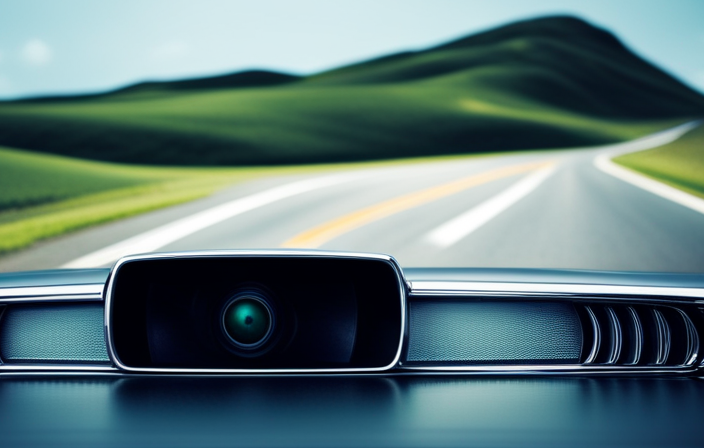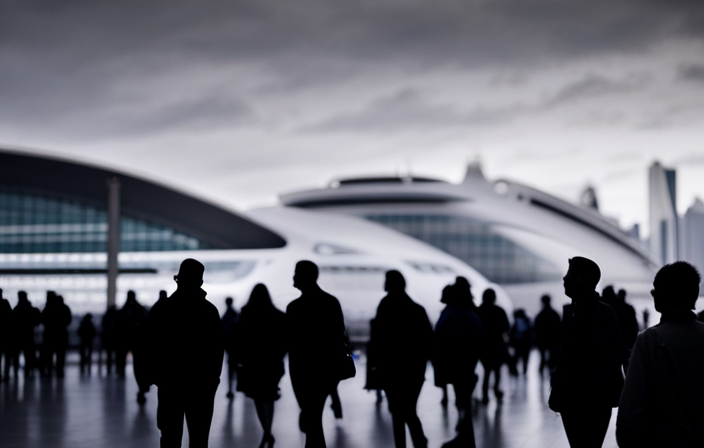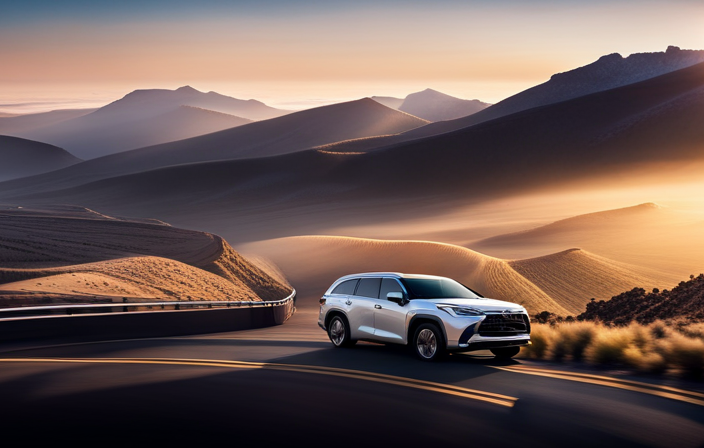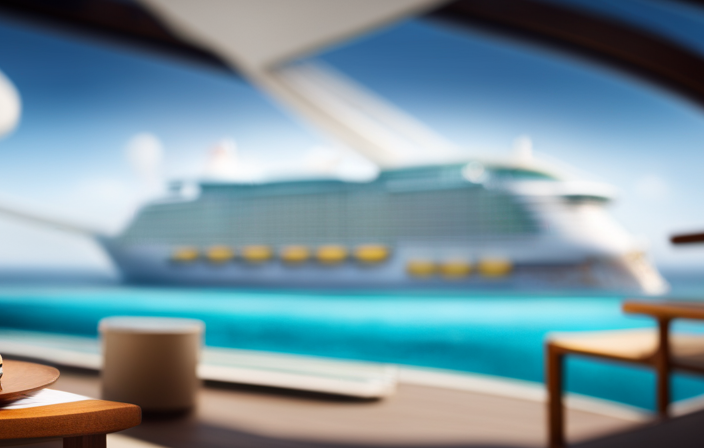Picture yourself smoothly cruising down the highway, advancing effortlessly with the feeling that you have your own personal navigator right there with you. This comfort and direction is the remarkable benefit that radar cruise control introduces to our driving experience. As a person with a deep interest in cars, I am constantly attracted to the latest technologies that improve our driving experiences. Radar cruise control stands out as an incredible advancement in this field.
This remarkable system utilizes advanced radar sensors to maintain a safe distance from the vehicle ahead, automatically adjusting your speed accordingly. It’s like having an extra set of eyes on the road, constantly scanning and reacting to changes in traffic conditions.
In this article, we will explore how radar cruise control works, its numerous benefits, and its evolution over time. We’ll also delve into the different types of radar cruise control systems available today and debunk some common misconceptions surrounding this technology.
So buckle up and get ready for an exciting journey into the world of radar cruise control!
Key Takeaways
- Radar cruise control utilizes radar technology to adjust speed and maintain a safe distance from other vehicles.
- It enhances safety by reducing the risk of rear-end collisions and provides a relaxed driving experience.
- Radar cruise control improves fuel efficiency by optimizing acceleration and deceleration.
- Advancements in sensor technology have revolutionized radar cruise control systems and paved the way for further advancements in automotive safety.
How Radar Cruise Control Works
Radar cruise control, or RCC, works by using radar technology to automatically adjust the speed of your vehicle. It does this in order to maintain a safe distance from the car ahead. This evolution of technology has had a significant impact on driving habits.
By constantly scanning the road ahead, RCC can detect the distance and speed of vehicles in front of you. It then uses this information to calculate the appropriate speed for your vehicle. This ensures that you maintain a safe following distance at all times.
This advanced system takes into account factors such as acceleration and braking patterns of the lead vehicle. It does this to provide a smooth and seamless driving experience. The benefits of radar cruise control go beyond just convenience. It also enhances safety on the roads by reducing the risk of rear-end collisions.
With RCC, drivers can enjoy a more relaxed and stress-free journey. They can do this without compromising safety.
Benefits of Radar Cruise Control
Radar cruise control offers several key benefits.
Firstly, it enhances safety on the road by maintaining a safe distance from the vehicle ahead and automatically adjusting speed accordingly. This feature reduces the risk of rear-end collisions and allows for smoother, more controlled driving.
Additionally, radar cruise control helps to reduce driver fatigue by taking over the task of constantly monitoring and adjusting speed, allowing drivers to focus more on their surroundings.
Lastly, this technology improves fuel efficiency by optimizing acceleration and deceleration, resulting in reduced fuel consumption.
Enhanced Safety on the Road
When you engage this advanced feature, your vehicle becomes equipped with a sophisticated system that enhances your safety on the road. Radar cruise control offers numerous benefits, including reduced accidents and increased driver confidence. By using radar sensors to detect the distance between your vehicle and the one in front of you, this technology automatically adjusts your speed to maintain a safe following distance. This helps prevent rear-end collisions and reduces the likelihood of accidents caused by human error or distraction. Additionally, radar cruise control can provide lane-keeping assistance, alerting you if you unintentionally drift out of your lane. By incorporating these safety features, radar cruise control significantly improves overall road safety. As a result, drivers can feel more confident and secure behind the wheel. With reduced driver fatigue being another advantage of this advanced feature…
Reduced Driver Fatigue
By incorporating this advanced technology, drivers can experience a significant decrease in fatigue behind the wheel. Radar cruise control enhances driver alertness by constantly monitoring the distance and speed of surrounding vehicles, allowing the system to automatically adjust the car’s speed to maintain a safe following distance. This technology also includes features such as lane-keeping assist and automatic braking, further ensuring road safety.
The radar sensors continuously scan the road ahead, detecting any potential obstacles or sudden changes in traffic patterns.
The adaptive cruise control system responds quickly to these detected changes, automatically adjusting the vehicle’s speed and maintaining a safe distance from other cars.
By reducing the need for constant speed adjustments and providing additional support through driver assistance features, radar cruise control allows drivers to focus more on their surroundings, resulting in reduced fatigue and increased attention on the road.
Improved Fuel Efficiency
You’ll be thrilled to discover how incorporating this cutting-edge technology can help you stretch your fuel tank further than ever before. Radar cruise control is not only great for reducing driver fatigue, but it also improves fuel efficiency by optimizing your driving habits and minimizing unnecessary fuel consumption.
By using radar sensors, this advanced system maintains a safe distance from the vehicle ahead of you, adjusting your speed accordingly. This means that you won’t have to constantly accelerate and decelerate, which can waste a significant amount of fuel.
Additionally, radar cruise control takes into account factors such as traffic flow and road conditions to ensure smooth and efficient driving. With these intelligent features, you’ll find yourself saving more fuel on each journey.
Now let’s explore the evolution of radar cruise control technology in the next section.
Evolution of Radar Cruise Control Technology
Early systems of radar cruise control were limited in their capabilities and functionality. They relied on basic sensor technology that had a relatively short range and was prone to false alarms.
However, advancements in sensor technology have greatly improved the accuracy and reliability of radar cruise control systems. Additionally, these systems have been integrated with other driver assistance systems, such as lane-keeping assist and automatic emergency braking, creating a more comprehensive and advanced driving experience.
Early Systems and Limitations
Although radar cruise control had its limitations, it was a groundbreaking technology in the automotive industry. Early systems were not as advanced as they are today, but they paved the way for future advancements in sensor technology. The adoption rate of radar cruise control was initially slow, mainly due to limited availability and high costs. However, as more automakers started incorporating this feature into their vehicles, user satisfaction increased significantly. People appreciated the convenience and safety benefits of having a system that automatically adjusts their vehicle’s speed based on the distance to the car ahead. Despite some early limitations such as occasional false detections and reduced functionality in poor weather conditions, radar cruise control proved to be a major step forward for driver assistance systems. With advancements in sensor technology, these limitations have been significantly addressed and overcome.
Advancements in Sensor Technology
The latest sensor technology has revolutionized the automotive industry, making driving safer and more convenient than ever before. Sensor advancements have played a critical role in the development of radar cruise control systems and their impact on autonomous vehicles.
These advanced sensors, such as radar and lidar, provide accurate and real-time data about the surrounding environment, allowing vehicles to detect obstacles, pedestrians, and other vehicles with great precision. This enables radar cruise control to maintain a safe distance from the vehicle ahead, adjust speed accordingly, and even bring the vehicle to a complete stop if necessary.
The integration of these sensors with other driver assistance systems further enhances their capabilities by creating a comprehensive network of safety features that work together seamlessly. As we delve into the next section about integration with other driver assistance systems, we will see how sensor technology has paved the way for even greater advancements in automotive safety.
Integration with other Driver Assistance Systems
Advancements in sensor technology have greatly contributed to the effectiveness of radar cruise control systems. However, integrating these systems with other driver assistance technologies poses significant challenges. The main challenge lies in ensuring seamless communication and coordination between various components such as cameras, radars, and sensors. Achieving this integration requires sophisticated software algorithms and hardware interfaces that can process information from multiple sources in real-time.
Despite these challenges, future developments hold promise for even more efficient integration of radar cruise control with other driver assistance systems. For example, researchers are exploring the use of artificial intelligence and machine learning algorithms to enhance system performance and adaptability. Additionally, advancements in vehicle-to-vehicle communication may enable cooperative driving scenarios where radar cruise control systems can communicate with each other to optimize traffic flow.
Now let’s delve into the different types of radar cruise control systems…
Different Types of Radar Cruise Control Systems
There are three main types of radar cruise control systems: Full-Speed Range Systems, Adaptive Systems, and Stop-and-Go Systems.
Full-Speed Range Systems are capable of maintaining a set speed in all driving conditions, including highway speeds.
Adaptive Systems can adjust the vehicle’s speed based on traffic flow, automatically slowing down or speeding up as needed.
Finally, Stop-and-Go Systems are designed for heavy traffic situations and can bring the vehicle to a complete stop and then resume motion when traffic starts moving again.
Full-Speed Range Systems
Full-speed range systems for radar cruise control allow the vehicle to maintain a set distance from the car ahead, even at high speeds. These advanced systems have full speed range capabilities, meaning they can operate effectively at both low and high speeds. Implementing these capabilities presents several challenges, including accurately detecting and tracking vehicles in a dynamic environment with varying speeds.
To overcome these challenges, manufacturers use sophisticated radar sensors that constantly scan the road ahead and calculate the distance and relative speed of other vehicles. The system then adjusts the throttle or applies brakes as needed to maintain a safe following distance.
Additionally, full-speed range systems often incorporate advanced features like stop-and-go functionality, which allows the vehicle to come to a complete stop in traffic and resume driving when conditions permit. This seamless transition between different driving scenarios is a key advantage of full-speed range systems over conventional cruise control methods.
Moving on to adaptive systems…
Adaptive Systems
Imagine yourself driving down the highway, effortlessly adjusting your speed and maintaining a safe distance from the car ahead with the help of an adaptive system. Adaptive systems, also known as adaptive cruise control or ACC, utilize a combination of sensors and algorithms to continuously monitor the surrounding traffic conditions and adjust the vehicle’s speed accordingly. These systems integrate radar and/or lidar sensors to accurately detect and track vehicles in front of you. By using advanced adaptive algorithms, they can calculate the optimal following distance based on factors such as speed, acceleration, and braking patterns of both your car and the vehicle ahead. This sensor integration allows for precise control over your vehicle’s speed while ensuring a safe buffer zone is maintained at all times.
| Adaptive Systems | |
|---|---|
| Features | Benefits |
| – Adjusts speed automatically | – Reduces driver fatigue |
| – Maintains safe distance | – Enhances safety |
With these sophisticated technologies in place, adaptive systems provide a seamless driving experience on highways. Now let’s delve into stop-and-go systems that offer even more convenience during congested traffic situations.
Stop-and-Go Systems
Get ready to experience a whole new level of convenience while navigating through congested traffic with stop-and-go systems. These driver assistance features are designed to alleviate the stress and frustration that comes with constantly starting and stopping in heavy traffic. With stop-and-go systems, your vehicle can automatically maintain a safe distance from the car ahead and bring you to a complete stop if needed, all without any input from you.
Here’s how it works:
- The radar sensor detects the distance between your vehicle and the car ahead.
- The system uses this information to adjust your speed accordingly, ensuring a safe following distance.
- If the car ahead stops, your vehicle will come to a smooth stop as well.
This advanced technology allows for a more relaxed driving experience in stop-and-go traffic.
Now let’s address some common misconceptions about radar cruise control…
Common Misconceptions about Radar Cruise Control
Contrary to popular belief, radar cruise control is not just a fancy feature for luxury cars, but rather a safety technology designed to assist drivers in maintaining a consistent speed and safe distance from the vehicle ahead.
One of the common misconceptions about radar cruise control is its effectiveness in heavy traffic or stop-and-go situations. While it may not completely eliminate the need for manual braking, radar cruise control can significantly reduce driver fatigue by automatically adjusting the vehicle’s speed to match the flow of traffic. This feature allows for smoother acceleration and deceleration, making driving in congested areas less stressful.
Additionally, some people believe that radar cruise control encourages reckless driving habits. However, this technology is programmed with built-in safety measures to prevent excessive speeding or sudden maneuvers. It simply provides an extra layer of assistance and should always be used responsibly.
Moving on to limitations and considerations for radar cruise control…
Limitations and Considerations for Radar Cruise Control
When it comes to radar cruise control, there are a few important limitations and considerations that need to be taken into account.
Adverse weather conditions can greatly impact the functionality of this system. Heavy rain or fog can interfere with the radar sensor’s ability to accurately detect objects.
Sensor interference and false alarms are also potential issues. Certain obstacles or structures can disrupt the radar signals, leading to inaccurate readings and warnings.
Lastly, it is crucial for drivers to remember that they still bear responsibility for maintaining control of their vehicle. They should remain engaged at all times, despite the assistance provided by radar cruise control.
Adverse Weather Conditions
In adverse weather conditions, radar cruise control offers several benefits. Firstly, it adjusts your speed to maintain a safe distance from the vehicle ahead, ensuring a smooth and confident driving experience. Additionally, this advanced system utilizes rain detection and snow detection capabilities to adapt to changing road conditions.
Rain detection is particularly useful as the radar sensors can detect water droplets in the air and adjust the cruise control speed accordingly. This feature helps prevent hydroplaning and maintains optimal control of the vehicle.
Similarly, snow detection is crucial in snowy conditions. The system can identify snowy conditions and modify the speed to prevent skidding or loss of control. This added safety feature ensures a safer driving experience in adverse weather conditions.
By utilizing these features, drivers can focus on the road without constantly adjusting their speed manually. However, it is important to note that extreme weather situations, such as heavy precipitation or poor visibility, can lead to sensor interference and false alarms.
Transitioning into the subsequent section about sensor interference and false alarms highlights another aspect of radar cruise control’s limitations.
Sensor Interference and False Alarms
Sensor interference and false alarms are common occurrences with radar cruise control. Radar sensors are designed to accurately detect objects in front of the vehicle, but they can be influenced by external factors such as heavy rain, fog, or debris on the road. These interferences can lead to false alarms, triggering braking or deceleration when there is no actual obstacle. Such incidents impact the reliability of the sensors and disrupt the driving experience. It is crucial for drivers to stay vigilant and engaged despite relying on this technology.
Now let’s discuss driver responsibility and engagement in ensuring safe travels on the road without solely depending on radar cruise control systems.
Driver Responsibility and Engagement
As we discussed earlier, sensor interference and false alarms can be common issues with radar cruise control systems. However, it’s important to note that even with these challenges, the ultimate responsibility for safe driving lies with the driver.
While radar cruise control can assist in maintaining a safe distance from other vehicles and adjusting speed accordingly, it should never replace the driver’s engagement and attention on the road. Driver distraction is a significant concern when using any type of advanced driver assistance system, including radar cruise control. Therefore, it is crucial for drivers to stay focused and remain actively involved in the driving process.
Additionally, there are legal implications associated with relying solely on radar cruise control. Laws vary by jurisdiction, but many require drivers to maintain full control of their vehicle at all times. This means that if an accident occurs due to a lack of driver engagement or distraction while using radar cruise control, the driver may be held legally responsible.
Now let’s explore the safety features and redundancies in radar cruise control that help ensure its effectiveness in promoting safer driving practices.
Safety Features and Redundancies in Radar Cruise Control
When it comes to radar cruise control, safety features and redundancies play a crucial role in ensuring driver and passenger safety. Three key points to consider are:
-
Forward collision warning: This feature uses radar sensors to detect potential obstacles ahead and alerts the driver if a collision is imminent.
-
Emergency braking: In the event of an impending crash that the driver has not responded to, this feature can automatically apply the brakes to help prevent or mitigate the impact.
-
Lane-keeping assist: This feature helps keep the vehicle within its designated lane by providing steering assistance if the driver starts drifting out of their lane.
These features work together to enhance safety and prevent accidents on the road.
Forward Collision Warning
Radar cruise control, equipped with forward collision warning, enhances driving safety by automatically adjusting the vehicle’s speed to maintain a safe distance from the car ahead. This advanced technology utilizes radar sensors to constantly monitor the distance and relative speed of the vehicles in front. If the system detects a potential collision, it provides visual and audible alerts to warn the driver.
Here are some key features of forward collision warning:
- Real-time monitoring: The system continuously scans for potential obstacles and calculates the risk of collision based on factors such as distance, closing speed, and trajectory.
- Early warning: Forward collision warning detects potential hazards before they become imminent threats, giving drivers valuable time to react and take preventive measures.
- Customizable settings: Drivers can adjust sensitivity levels according to their preferences or specific driving conditions.
- Adaptive functionality: The system can adapt its warnings based on various scenarios such as highway driving or heavy traffic.
With forward collision warning acting as an important precursor, let’s now delve into the next crucial aspect – emergency braking.
Emergency Braking
Emergency braking is a crucial aspect of road safety. Radar cruise control systems are equipped with collision avoidance technology that automatically applies the brakes in critical situations. Sensors detect objects in front of the vehicle and calculate the distance and speed differential. If a potential collision is detected, the system alerts the driver and applies additional braking force if necessary. This advanced technology provides an extra layer of protection and gives drivers peace of mind. It is especially important in situations where unexpected obstacles or sudden stops occur.
Transitioning into the subsequent section about lane-keeping assist, this feature complements emergency braking by ensuring that vehicles stay within their designated lanes without veering off course.
Lane-Keeping Assist
Stay focused and keep your vehicle centered within the lanes with the assistance of lane-keeping technology, feeling as if you have an invisible hand guiding you along the road. Lane-keeping assist is a feature in radar cruise control systems that uses cameras or sensors to detect lane markings and helps prevent unintentional drifting or veering out of your designated lane. By analyzing the position of your vehicle within the lanes, it provides gentle steering inputs to keep you on track. This technology not only enhances safety by reducing the risk of accidents caused by distracted driving or fatigue but also improves overall driving comfort. Road departure prevention is another aspect of lane-keeping assist, which can intervene with corrective measures if it detects that your vehicle is about to leave the roadway unintentionally. Looking ahead, future trends and innovations in radar cruise control will continue to enhance these technologies for even more precise and intelligent driving assistance.
Future Trends and Innovations in Radar Cruise Control
With advancements in technology, we can expect radar cruise control to become even more intuitive and seamlessly integrated into future vehicles.
The future market for radar cruise control looks promising, as automakers continue to invest in research and development to enhance this technology.
We can anticipate technological advancements that will improve the accuracy and responsiveness of radar systems, allowing for better detection and tracking of surrounding vehicles.
Additionally, future radar cruise control systems may incorporate artificial intelligence algorithms to analyze traffic patterns and make real-time adjustments to speed and distance settings.
These advancements will not only enhance safety but also improve fuel efficiency by optimizing acceleration and deceleration.
As we move forward, it is exciting to see how radar cruise control will compare with traditional cruise control systems in terms of performance and user experience.
Comparison with Traditional Cruise Control
Embrace the future of driving by comparing the innovative advancements in radar technology to the traditional cruise control system you’re used to.
When it comes to comparison with traditional cruise control, radar cruise control offers several advantages that make it a superior option.
First and foremost, radar cruise control uses sensors and radar technology to detect vehicles ahead and automatically adjusts your vehicle’s speed to maintain a safe distance. This eliminates the need for constant adjustments and reduces driver fatigue.
Additionally, radar cruise control can also monitor traffic conditions and adapt accordingly, making it more efficient in congested areas.
Furthermore, this advanced system can even bring your vehicle to a complete stop if necessary, ensuring maximum safety on the road.
With these benefits in mind, it is clear that radar cruise control is revolutionizing the way we drive.
Transitioning into the subsequent section about ‘conclusion: the future of radar cruise control,’ we can see how this technology is shaping the future of automotive innovation.
Conclusion: The Future of Radar Cruise Control
The future of radar cruise control holds immense potential to redefine our driving experience and propel us into a new era of automotive innovation. With continuous advancements in technology, we can expect exciting developments in radar cruise control systems that will enhance safety and convenience on the roads.
Here are some key future developments to anticipate:
-
Improved sensor capabilities: Radar sensors will become more sophisticated, allowing for better detection and tracking of vehicles, pedestrians, and obstacles.
-
Integration with autonomous driving: Radar cruise control will be seamlessly integrated with self-driving technologies, enabling fully autonomous highway driving.
-
Enhanced connectivity: Radar cruise control systems will communicate with other vehicles on the road, leading to improved traffic flow and reduced congestion.
-
Industry adoption: As the benefits of radar cruise control become more evident, it is expected that more car manufacturers will adopt this technology as a standard feature.
-
Personalization options: Drivers will have more customization options available to tailor their radar cruise control settings to their preferences.
The future of radar cruise control is bright, promising safer and more efficient journeys for drivers worldwide.
Frequently Asked Questions
Are radar cruise control systems only available in high-end vehicles?
No, radar cruise control systems are not only available in high-end vehicles. While they may be more common in luxury cars, there are also affordable options that offer this advanced safety feature. The cost of radar cruise control varies depending on the vehicle and brand.
Can radar cruise control be used in all weather conditions?
Radar cruise control can be used in all weather conditions, making it a reliable feature. It has a positive impact on fuel efficiency by maintaining a steady speed and adjusts to heavy traffic effectively.
How does radar cruise control handle sudden stops or obstacles in the road?
When it comes to handling sudden stops or obstacles in the road, radar cruise control uses obstacle detection technology to quickly assess the situation and apply the brakes if necessary, ensuring a safe and controlled response.
Can radar cruise control be overridden or turned off by the driver?
Yes, the driver can override or turn off radar cruise control. This is important for maintaining control in certain situations. However, it is recommended to use this feature as it enhances safety by automatically adjusting speed and maintaining a safe distance from other vehicles.
Are there any potential privacy concerns with radar cruise control systems?
There are potential privacy concerns with radar cruise control systems. The use of radar technology in these systems can raise issues regarding the collection and storage of personal data, potentially leading to potential legal implications and ethical considerations.
Conclusion
In conclusion, radar cruise control is a remarkable technology that has revolutionized the way we drive.
While some may argue that relying on automated systems takes away from the joy of driving, it’s important to recognize the immense safety benefits and convenience that radar cruise control offers.
By using sensors and advanced algorithms, this system can detect and respond to traffic conditions in real-time, ensuring a smoother and safer driving experience.
As technology continues to advance, we can expect even more innovative features and enhancements in radar cruise control, making our roads safer than ever before.










